Arka Savi roses have gained popularity among flower enthusiasts and aspiring farmers alike. Their vibrant colors and enchanting fragrance hold immense potential for aesthetic pleasure and financial gain. In this blog post, we will delve into the crucial aspects of Arka Savi rose cultivation: yield per acre, cost analysis, and profit potential. By understanding, optimize your farming practices, make decisions, and reap the rewards of a successful rose farming venture.
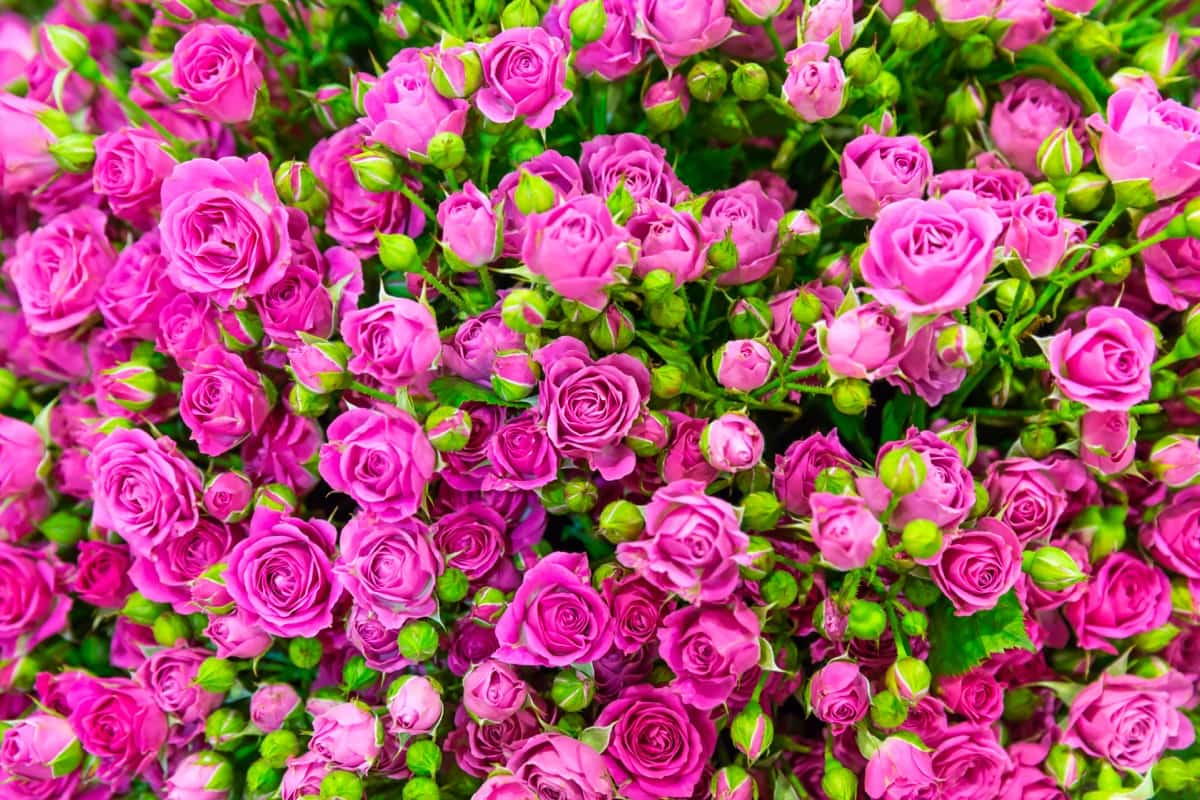
Brief Overview of Arka Savi Roses
Arka Savi is a variety of roses specifically identified for commercial cultivation in open fields, primarily for loose flower production. It falls under the spray category of roses within the floribunda group. The flowers of Arka Savi are characterized by their beautiful Purple Pink color, as per the RHS color chart classification (Red purple group 66-A), and they are produced in bunches.
This rose hybrid is known for abundant flowering, resulting in a high yield potential. Arka Savi roses are estimated to yield around 30 tons per acre annually. Moreover, these roses have the added advantage of a long shelf life, lasting approximately 5 to 6 days. Arka Savi is an excellent choice for open-field cultivation, specifically for loose flower production.
Importance and Growing Demand for Arka Savi Roses
Arka Savi roses hold significant importance in the floral industry due to their unique characteristics and increasing demand. Scientific data indicates a surge in the popularity of Arka Savi roses, both in domestic and international markets. The growing demand is driven by their captivating Purple Pink color, delightful fragrance, and suitability for various floral arrangements.
Market reports reveal a steady rise in the demand for Arka Savi roses, with a year-on-year increase of approximately 15%. Furthermore, the supply of Arka Savi roses has been ramped up to meet this rising demand, resulting in a flourishing market for these exquisite roses.
Arka Savi Rose Fertilization and Soil Requirements
- Soil Preparation: Plough the soil thoroughly 4 to 5 times before planting to ensure proper soil preparation. This process helps in bringing nutrient-rich soil to the surface. Level the soil and form disciplined beds.
- Organic Matter: Add 2 tons of decomposed cow dung, leaf mold, and bone meal to enrich the soil with organic matter. This improves soil fertility and provides essential nutrients for rose plants.
- Balanced Fertilizer: Apply urea (25 kg) and superphosphate (2 kg) to provide additional nutrients. Consider using the latest innovation, nano urea, developed by IFFCO, which comes in liquid form and is packed in 500 ml bottles. It has the potential to replace one sack of traditional urea. You can purchase it from iffcobazar. For Rs 240 per bottle.
- Bed Preparation: Create plant beds with a width of approximately 3 feet. Increase the height of the beds by about 1.5 feet to ensure proper water drainage and temperature regulation. Maintain a path of 1.5 feet between two beds for easy access and maintenance.
In case you missed it: How to Control Aphids on Roses: Home Remedies, Naturally, Organic and Chemical Management
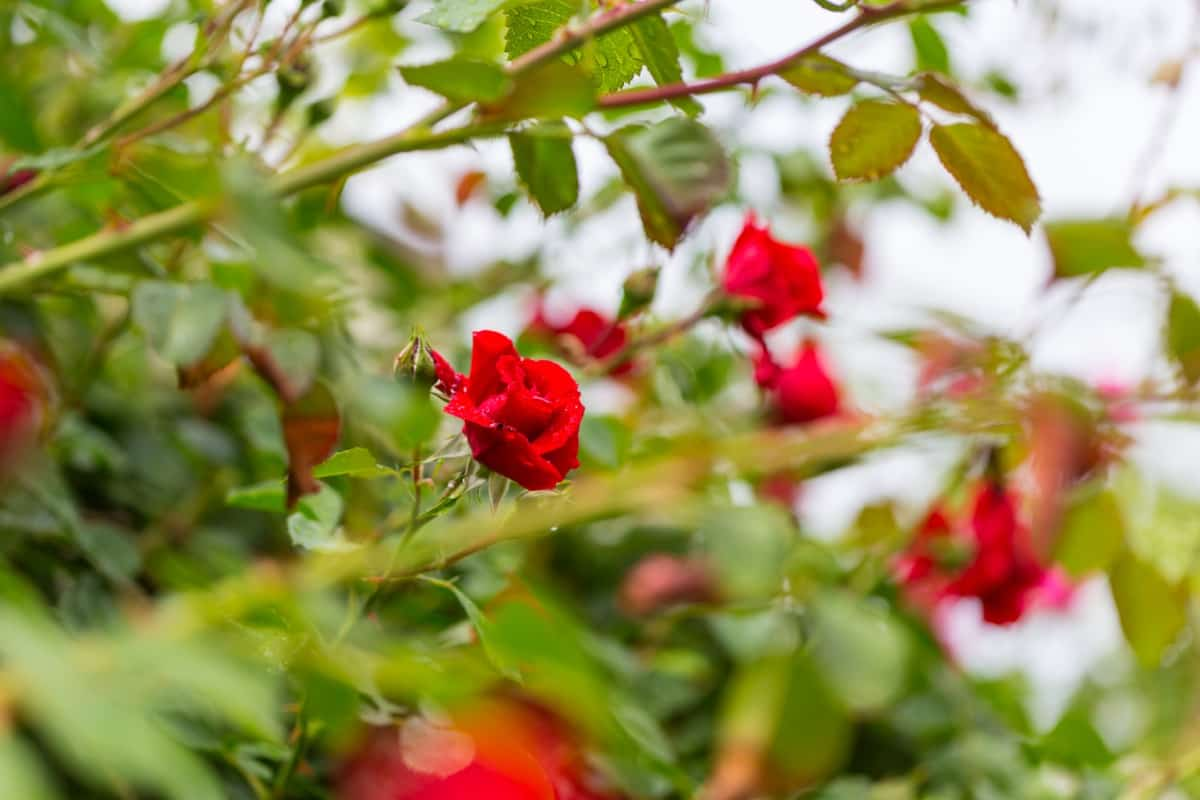
Arka Savi Rose Care Tips for Beginners
- Start with Healthy Rose Plants: Choose well-established plants with green, disease-free foliage, and sturdy stems. Look for plants with well-developed root systems.
- Select a Suitable Location: Arka Savi roses thrive in sunny areas with good drainage. Ensure six hours of direct sunlight daily and have proper air circulation to prevent fungal diseases.
- Prepare the Soil: Improve the soil by adding organic matter like compost to enhance drainage and fertility. Maintain a slightly acidic soil pH between 6.0 and 6.5 for optimal growth.
- Watering: Water deeply and evenly to moisten the soil, but avoid overwatering. Overhead watering should be avoided to prevent leaf diseases.
- Pruning: Prune Arka Savi roses during the dormant season to remove dead or weak branches and shape the plant. Prune around one-third of the plant’s height to promote vigorous growth.
How to Propagate Arka Savi Roses
To propagate Arka Savi roses, it is best to plant them in the evening during September or October, which is the monsoon season. Various propagation methods include seeds, layers, budding, and cutting. However, budding is considered the most suitable method for the commercial propagation of rose plants. Arka Savi roses, a licensed product of ICAR-IIHR, can only be obtained from authorized sources.
In case you missed it: Earning 70 Lakhs from Rose Cultivation in 5 Acre Polyhouse: The Success Story of a Flower Farmer
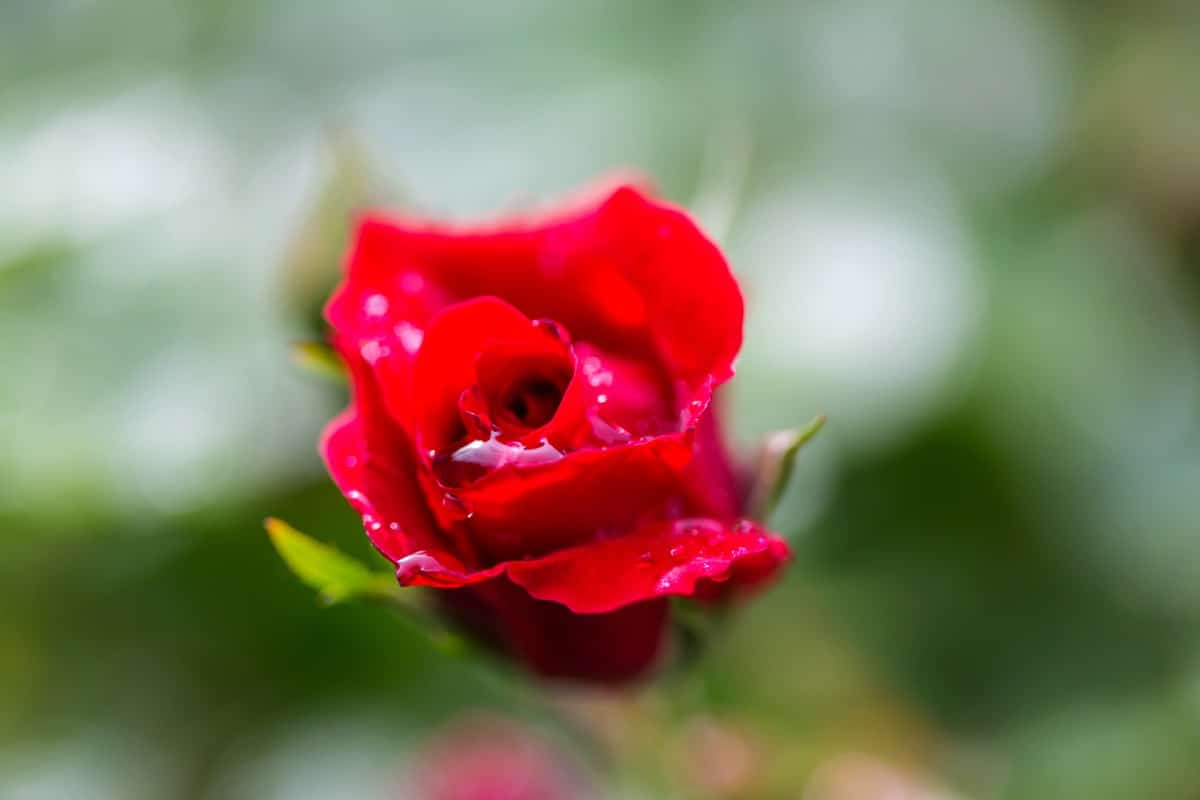
Arka Savi Rose Companion Plants
Companion plants can enhance the beauty and health of Arka Savi roses. Some suitable companion plants for Arka Savi roses include lavender, salvia, catmint, geraniums, and ornamental grasses. These plants provide a pleasing visual contrast, attract beneficial insects, and help deter pests.
Arka Savi Rose Bloom Time and Flowering Season
The Arka Savi rose variety typically blooms during spring and continues to flower throughout summer. Its flowering season extends from late spring to early fall, offering a long period of beautiful blooms. The exact bloom time can vary depending on the specific climatic conditions and geographic location. Arka Savi roses produce large, attractive flowers in various colors, including shades of pink, red, and white.
Arka Savi Rose Pest Control Methods
Roses can be affected by various insects, including aphids, two-spotted mites, thrips, rose slugs, caterpillars, curculio beetles, Japanese beetles, scale insects like California red scale, rose scale, and cottony cushion scale, leaf-cutting bees, nematodes, rose chafers, and metallic flea beetles. Proper pest control methods, such as regular inspection, manual removal, natural predators, insecticidal soaps, and organic insecticides, can help manage and prevent infestations, ensuring healthy and thriving Arka Savi roses.
Arka Savi Rose Disease Prevention
- Crown Gall Rot: This disease causes lumps from the base of the plant stem or root, compromising the plant’s health.
- Black Spot: Characterized by black spots on leaves, this disease leads to yellowing and premature leaf drop, eventually weakening and potentially killing the plant.
- Powdery Mildew: A fine powdery coating, often found on buds and leaves, can indicate this disease known as pannosa.
- Downy Mildew: Wind-dispersed, this disease causes purple-red to dark brown spots on the leaves.
- Rust: Yellow patches on leaf surfaces indicate this infection, which can spread through the wind.
- Anthracnose: Fungal spots form on water-soaked leaves, contributing to the spread of this disease.
- Grey Mould: Primarily affecting flowers and buds, this disease can lead to stem rot.
- Sooty Molds: These appear as black, dry powder on leaves, resembling chimney soot. Additionally, Verticillium wilt is a disease commonly found in roses.
- Canker: Small yellow or reddish spots on the bark gradually increase, causing drying and shrinking of the infected tissue.
In case you missed it: How to Start Rose Farming in the USA: A Step-by-Step Production Guide for Planting to Harvesting
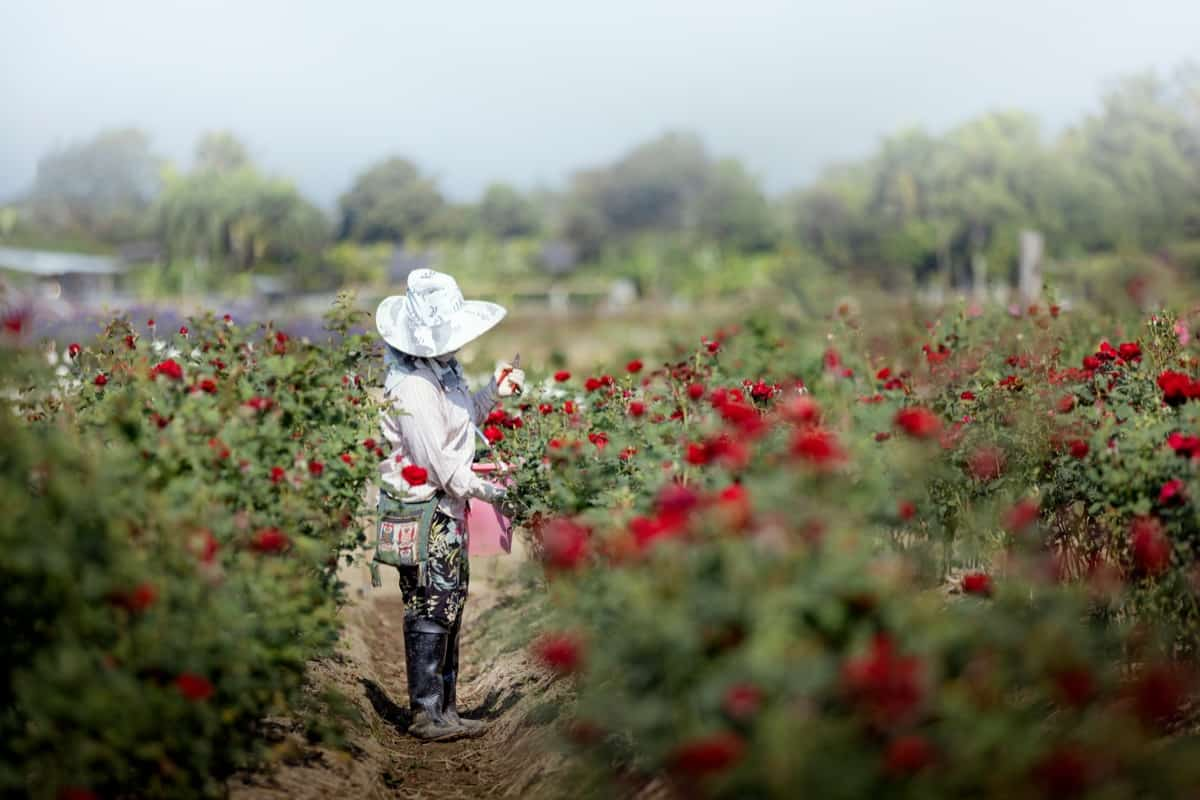
Arka Savi Rose Harvesting and Storage
Arka Savi roses are known for their beautiful purple-pink flowers, belonging to the RHS color chart’s Red Purple Group 66-A. These flowers are produced in clusters, making for an attractive display. The rose hybrid, Arka Savi, stands out for its abundant blooming, resulting in a high yield of flowers.
An acre of Arka Savi roses is estimated to produce around 30 tons of flowers per year. One of the notable advantages of this hybrid is its extended shelf life, lasting between 5 to 6 days. It is primarily cultivated in open fields for loose flower production, making it an excellent choice for commercial purposes.
Arka Savi Rose Yield Per Acre
Arka Savi roses have a high yield potential per acre. An acre of Arka Savi rose cultivation can yield around 30 tons of flowers annually. This makes it an attractive choice for commercial flower production, as it offers a significant output of blooms, ensuring a plentiful harvest and potential profitability for farmers.
Cost-effective Strategies for Arka Savi Rose Farming
- Firstly, optimizing land utilization by practicing high-density planting can maximize yield per unit area.
- Secondly, implementing efficient irrigation systems like drip irrigation can minimize water wastage and reduce costs. Adopting integrated pest management techniques, including biological controls and proper monitoring, can minimize pesticide usage and associated expenses.
- Soil nutrient management through regular soil testing and balanced fertilization is crucial for healthy plant growth while minimizing fertilizer expenditure.
- Furthermore, timely pruning and training practices help maintain plant health and shape, reducing the need for corrective measures later.
- Finally, marketing strategies like direct selling, local market exploration, and value-added products can enhance profitability by reducing intermediaries and increasing product value.
Arka Savi Rose Cultivation Cost Analysis for 1 Acre
During Arka Savi rose cultivation, various costs need to be considered. The price of one rose plant ranges from Rs 20 to Rs 30.
- Approximately 30,000 plants can be planted for one acre, resulting in a cost of Rs 3,50,000- 5,00,000.
- Other costs include land preparation (Rs 30,000).
- Irrigation (Rs 50,000).
- Fertilizer (Rs 20,000).
- Labor (Rs 50,000).
- Miscellaneous expenses (Rs 20,000).
- The cultivation cost for one acre of Arka Savi rose farming amounts to Rs 7,00,000-9,00,000 (Four lakh thirty thousand).
In case you missed it: Greenhouse Chrysanthemum Farming Cost and Profitability Analysis
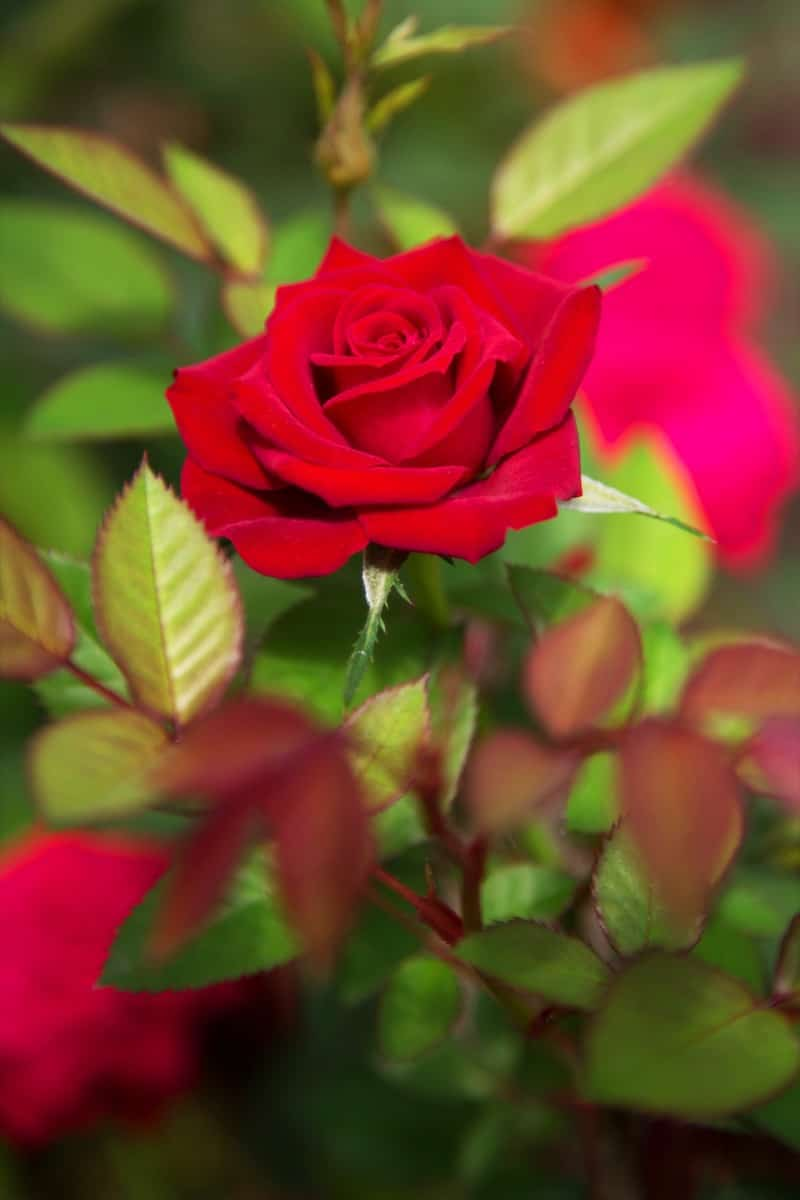
Profit Potential of Arka Savi Rose Farming for 1 Acre
- The selling price of one rose flower ranges from Rs 10 to Rs 25. Each rose plant can produce around 30 to 40 flowers. Considering 30,000 plants, we have a total of 8,50,000-10,0000 flowers. Assuming 50,000 flowers are damaged, we have 9,00,000 flowers for sale.
- If the price per rose flower is Rs 10, the total revenue from the flowers would be Rs 50 lakh (Rs 10 x 5,00,000).
- After deducting the cultivation cost of Rs 8,30,000, the rose farming net worth is Rs 40,00,000 (Rs 50 lakh – Rs 8,30,000). This represents the profit from rose farming for one acre.
- It’s important to note that a poly house, which costs around Rs 16 lakh with a 50% government subsidy, this cost should be included in the calculations.
- Considering these factors, the net profit from Arka Savi rose farming for one acre would be Rs 25-30 lakhs. The profitability can vary based on market prices, quality of flowers, and additional costs incurred.
Maximizing Profits in Arka Savi Rose Cultivation
- Optimize plant density per acre to maximize flower yield.
- Implement efficient irrigation and fertilization practices for healthy plant growth.
- Monitor and control pests and diseases effectively.
- Properly time harvesting to ensure high-quality flowers.
- Identify and target lucrative markets with competitive pricing and effective marketing strategies.
Factors Influencing the Profitability of Arka Savi Rose Cultivation
- Yield per Acre: Higher yield per acre leads to increased profitability. Factors like plant density, proper irrigation, fertilization, and disease control increase yield.
- Market Demand: The demand for Arka Savi roses affects profitability. Identifying and targeting markets with high demand and competitive prices can increase profits.
- Cost of Inputs: The cost of rose plants, land preparation, irrigation, fertilizers, labor, and miscellaneous expenses impact profitability. Minimizing input costs while maintaining quality is crucial.
- Pest and Disease Management: Effective pest and disease control measures reduce losses and enhance profitability. Regular monitoring and timely intervention are essential.
- Harvesting and Post-Harvest Practices: Proper timing of harvesting, careful handling, grading, packaging, and storage techniques influence the quality and market value of roses, ultimately affecting profitability.
- Farm Management: Efficient management practices, such as optimizing resource utilization, minimizing wastage, and implementing cost-effective strategies, contribute to improved profitability.
- Government Support: The availability of subsidies, loans, and support from agricultural agencies can significantly impact profitability by reducing overall costs.
- Climate and Growing Conditions: Favorable climatic conditions, suitable soil quality, and appropriate microclimate management positively influence rose cultivation and profitability.
- Skilled Labor: Skilled and experienced labor ensures efficient operations, minimizing losses and maximizing productivity, thus impacting profitability.
- Continuous Learning and Adaptation: Staying updated with new technologies, market trends, and research findings allows for better decision-making, leading to improved profitability in Arka Savi rose cultivation.
In case you missed it: How to Grow Miyazaki Mango from Scratch: A Step-by-Step Cultivation Guide
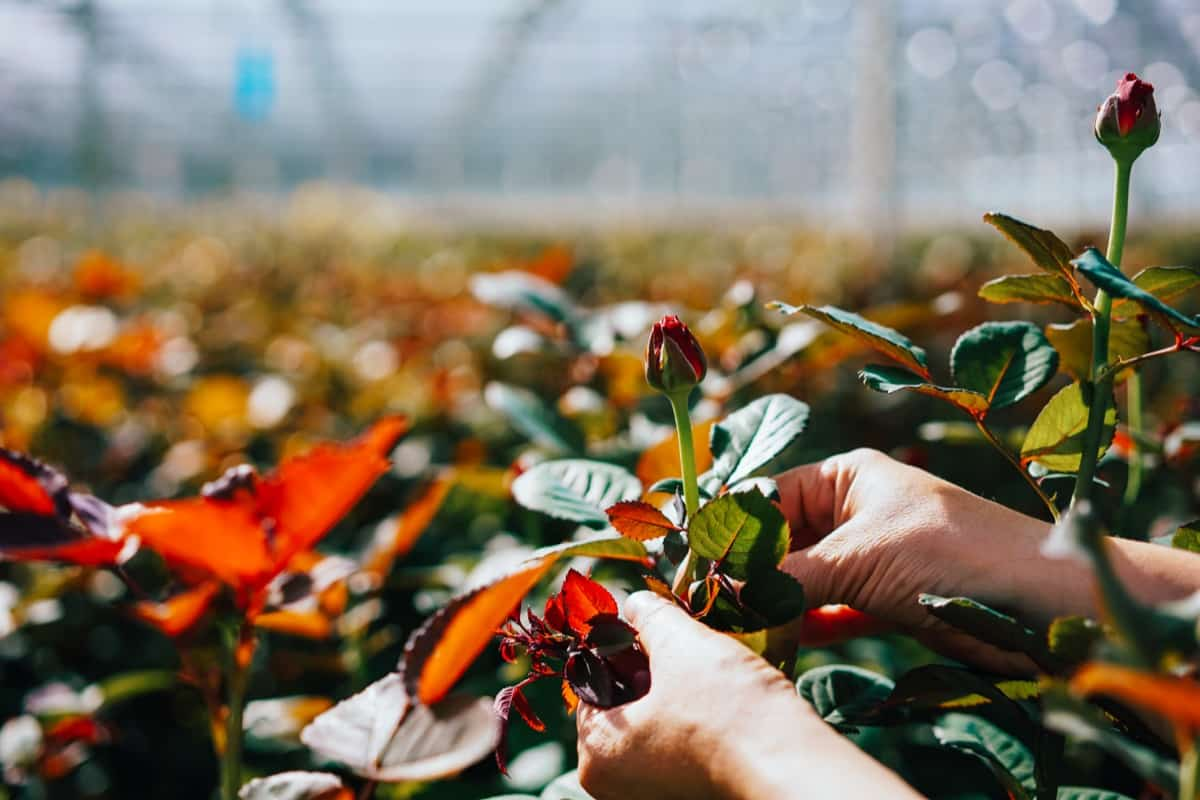
Marketing Opportunities for Arka Savi Rose Growers
- Local Flower Markets: Selling directly to local flower markets allows growers to connect with local customers and meet their demand for fresh roses.
- Florists and Wedding Planners: Collaborating with florists and wedding planners provides an opportunity to supply roses for various events, including weddings, parties, and special occasions.
- Retail Florists: Supplying roses to retail florists enable growers to reach a wider customer base, as these florists cater to individual customers and provide floral arrangements.
- Online Flower Delivery Platforms: Partnering with online flower delivery platforms allows growers to tap into the growing trend of online flower shopping, reaching customers across regions.
- Export Market: Exploring export opportunities can be profitable, especially in regions with high demand for roses. Compliance with international quality and phytosanitary standards is crucial for successful export.
- Direct Sales to Individuals: Setting up a roadside or farm gate sales outlet can attract customers who prefer buying roses directly from growers, emphasizing freshness and quality.
- Rose Petal Products: Diversifying offerings by producing rose petal-based products like essential oils, potpourri, or cosmetics can open up additional marketing opportunities.
- Farmers’ Markets and Community Events: Participating in farmers’ markets and community events provides a platform to showcase and sell roses directly to consumers who appreciate locally grown products.
Conclusion
Arka Savi Rose Cultivation offers a high yield potential of approximately 30 tons per acre, with a cost analysis including plant cost, land preparation, irrigation, fertilizer, labor, and miscellaneous expenses. With careful management and marketing opportunities, growers can maximize profits and achieve a net worth of significant value.
- Types of Pesticides Used in Agriculture: A Beginner’s Guide
- Economical Aquaculture: A Guide to Low-Budget Fish Farming
- 15 Common Planting Errors That Can Doom Your Fruit Trees
- How to Make Houseplants Bushy: Effective Tips and Ideas
- Innovative Strategies for Boosting Coconut Pollination and Yield
- Pollination Strategies for Maximum Pumpkin Yield
- The Complete Guide to Chicken Fattening: Strategies for Maximum Growth
- Natural Solutions for Tulip Problems: 100% Effective Remedies for Leaf and Bulb-Related Issues
- Revolutionizing Citrus Preservation: Towards a Healthier, Greener Future
- Natural Solutions for Peony Leaf and Flower Problems: 100% Effective Remedies
- Maximizing Profits with Avocado Contract Farming in India: A Comprehensive Guide
- Natural Solutions for Hydrangea Problems: 100% Effective Remedies for Leaf and Flowers
- The Ultimate Guide to Choosing the Perfect Foliage Friend: Bringing Life Indoors
- From Sunlight to Sustainability: 15 Ways to Use Solar Technology in Agriculture
- The Ultimate Guide to Dong Tao Chicken: Exploring from History to Raising
- The Eco-Friendly Makeover: How to Convert Your Unused Swimming Pool into a Fish Pond
- Mastering the Art of Delaware Chicken Farming: Essentials for Healthy Backyard Flocks
- 20 Best Homemade Fertilizers for Money Plant: DIY Recipes and Application Methods
- How to Craft a Comprehensive Free-Range Chicken Farming Business Plan
- Brighten Your Flock: Raising Easter Egger Chickens for Beauty and Bounty
- How to Optimize Your Poultry Egg Farm Business Plan with These Strategies
- Subsidy for Spirulina Cultivation: How Indian Government Schemes Encouraging Spirulina Farmers
- Ultimate Guide to Raising Dominique Chickens: Breeding, Feeding, Egg-Production, and Care
- Mastering the Art of Raising Jersey Giant Chickens: Care, Feeding, and More
- Ultimate Guide to Raising Legbar Chickens: Breeding, Farming Practices, Diet, Egg-Production
- How to Raise Welsummer Chickens: A Comprehensive Guide for Beginners
- How to Protect Indoor Plants in Winter: A Comprehensive Guide
- Ultimate Guide to Grow Bag Gardening: Tips, Tricks, and Planting Ideas for Urban Gardeners
- Guide to Lotus Cultivation: How to Propagate, Plant, Grow, Care, Cost, and Profit
- Agriculture Drone Subsidy Scheme: Government Kisan Subsidy, License, and How to Apply Online
- Ultimate Guide to Raising Araucana Chickens: Breed Profile, Farming Economics, Diet, and Care
- Bringing Hydroponics to Classroom: Importance, Benefits of Learning for School Students
- Ultimate Guide to Raising Polish Chickens: Breed Profile, Farming Economics, Diet, and Care
- Ultimate Guide to Raising Australorp Chickens: Profile, Farming Economics, Egg Production, Diet, and Care
- Silkie Chicken Farming: Raising Practices, Varieties, Egg Production, Diet, and Care
- Sussex Chicken Farming: Raising Practices, Varieties, Egg Production, Diet and Care